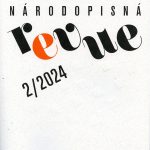
Článek se zabývá problematikou vzdělávání dětí z uprchlických rodin. Koncept kritické časovosti poskytuje rámec pro přemýšlení o ohrožené přítomnosti a budoucnosti těchto mladých lidí. Cílem je ukázat, jak se temporality různých institucí a prostorů vzájemně ovlivňují a navigují životní dráhy mladých lidí v jednom z klíčových momentů jejich života, a to v okamžiku volby střední školy. Situace je sledována na příkladu několika studentů z řad uprchlíků, kteří usilovali o přijetí na střední školu ve školním roce 2022/2023. Článek ukazuje, jak do volby následné vzdělávací kariéry vstupují různé temporality. Vše se odehrává v interakci více časových rovin – institucionální, každodenní a biografické – v zemi původu a v cílové zemi. Existují biografické časové osy nejen dětí, ale i rodičů, které určují budoucnost a přítomnost dětí. Vedle institucionálních časových rovin školy hraje významnou roli fáze dospívání a časová rovina války.
Článek tematizuje přináležení druhé generace muslimů k českému prostoru. Tito mladí lidé se v České republice narodili, byli zde socializováni, mají české občanství, ale hegemonní diskurz české nacionality je natolik specifický, že nikoliv vždy do jejího obrazu zapadají. Jejich rodiče přicházeli do Československa a později do České republiky v 70. a 90. let převážně ze studijních a pracovních důvodů, ze zemí Blízkého východu, subsaharské Afriky či (post)sovětského regionu. Repertoár jejich politiky identit je i z tohoto důvodu vícevrstevnatý a rozmanitý. Ptám se tedy, jak vyjednávají svou identitu ve vztahu k češství a jakými praxemi ji naplňují s ohledem na migrační původ jejich rodičů. Data jsem vytvořila na základě polo-strukturovaných rozhovorů.
This paper discusses the evidence for “corpse roads” in early modern Britain. Corpse roads were route ways used by funeral parties to transport the deceased from the place of death to the place of final interment. In some cases, some routes took on localised symbolic or folkloric significance, and in a few cases, this is preserved in the present day in contemporary route names, tourism and on modern maps. This paper reviews the evidence for corpse roads, and the methodologies needed to interrogate that evidence. These methodologies are drawn from folklore, ethnology, archaeology and history. The case of one corpse path, in Swaledale in northern England, is presented as a case study.
The article examines currently active traditional hussar associations that are part of reenactment movements in Szeklerland (Romania). The concept of the hussar is no longer used in military contexts but rather in leisure time activities. The heritage-preserving hussars actively participate in the cultural life of Harghita County through spectacular hussar parades and colorful performances and customs, rich in representations and symbols. The hussars also have their own invented traditions, where the intention of nation-building is palpable. It is important for them to live and represent their national identity, set examples, preserve traditions, build communities, and revive and live the Szekler-Hungarian traditions. They also play an active role in reviving the historical equestrian past of the Szekler region and promoting equestrian sports.
In this article, through selected examples of local theatre activity in rural environments in Slovenia, the author describes how and in what way the actors come together to draw material for their vernacular theatre performance. Their own heritage, with which the entire community is familiar, since they grew up and lived with it, thus becomes an inspiration to creators. It is for this reason that people draw on heritage for materialisation through staging. The article shows how, in seeking identity, the materialisation of past events is carried out at different levels of theatre-making. It tries to provide an insight into how performing such an act affects the life of the entire community and how it reflects on a daily basis.
Společenská kronika
Jubilant Juraj Zajonc – muž mnoha talentů (Martin Šimša)
Blahopřání Jiřině Todorovové (Jan Šejbl)
Odešla Marie Majtánová-Korandová (Marta Ulrychová
Výstavy
Klitzeklein – krušnohorské dřevěné miniatury a „kuřáčci“ v muzeu v Mitterteichu (Marta Ulrychová)
Zprávy
Seminář Etnografické komise AMG ČR v Jindřichově Hradci (Petr Číhal)
10. zasedání Valného shromáždění smluvních států Úmluvy o zachování nemateriálního kulturního dědictví (Jan Blažek)
Recenze
T. Zachar Podolinská – K. Popelková: The Story of Cohesion: On the history of an academic institution (Nikola Balaš)
D. Drápala a kol.: Stopy lidského umu. Předindustriální technické provozy na území někdejšího panství Rožnov (Martin Novotný)
A. Ďuricová – E. Molnárová (eds): Od textu k prekladu XVII (2. časť) (Hedviga Kubišová)
P. Beneš – I. Bukačová – J. Fák – P. Kodera – V. Podestát: Poklady Mariánské Týnice (Marta Ulrychová)
Contents in English
10543
10542
10541
10540
10539